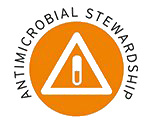Study Highlights the Utility of Bacterial Fluorescence Imaging to Provide Real-Time Information to Clinicians on a Wound’s Bacterial Burden that Significantly Impacted Treatment Decisions
TORONTO, Canada – (September 13, 2019) MolecuLight Inc., the world’s leader in handheld real-time fluorescence imaging for chronic wounds, announces the publication of “Fluorescence imaging guided dressing change frequency during negative pressure wound therapy: a case series”, a new paper published today in the Journal of Wound Care (2019), 28(9).
This case series by Rose Raizman, RN-EC, MSc, reports on the use of fluorescence imaging in conjunction with routine wound assessments for clinical signs and symptoms of infection in patients undergoing negative pressure wound therapy (NPWT) at Scarborough Health Network (Scarborough, ON, Canada). Real-time information was obtained non-invasively from fluorescence images captured with the MolecuLight i:X. The images assisted in determining the presence or absence of bacterial fluorescence, its location and changes over time. In the study, this information significantly impacted treatment decisions and was used to improve the use of NPWT resources and dressing change frequency.
This study reported that 9/10 patients were likely to have received less appropriate triaged care without the fluorescence information. Specifically, 60% of patients may have been undertreated for their bacterial burden. These patients therefore benefited from increased resources in the short term, while 30% of patients were being overtreated and fluorescence information prompted a decrease in resource use. Based on microbiological confirmation and wound progress, triaging resources elsewhere did not compromise wound progress.
The study reports on how fluorescence imaging in real-time helped to guide:
- bacterial burden-based, personalized treatment regimens,
- clinician selection of NPWT with or without instillation of wound cleansers and,
- the extent and location of wound cleaning during dressing changes. The ability to visualize the fluorescence emitted from bacteria prior to removal of dressings led to expedited dressing changes when heavy bioburden was detected. It also guided postponement of dressing changes for 24 hours when red fluorescence was not observed, avoiding unnecessary disturbance of the wound bed.
This study also describes the economic benefit of leveraging fluorescence imaging to help guide treatment decisions, along with clinical signs and symptoms, for managing NPWT. The author reports a potential $1,552 USD single patient cost savings due to fluorescence evidence-based treatment plan changes.
The paper concludes, “Fluorescence images acquired in this series of 10 patients provided real-time information on bacterial contamination in wounds. Having access to this information facilitated immediate, evidence-based and patient-specific changes in treatment plans. Images prompted and otherwise helped guide timing of dressing changes, guided the extent of wound cleaning, and guided selection of NPWT therapies that were most appropriate for patient needs”.
This paper is available from the Journal of Wound Care. It is the 8th peer-reviewed paper published on results derived from the MolecuLight i:X imaging device this year, and the 24th published paper to-date. See a complete listing of published papers is available.
About MolecuLight Inc.
MolecuLight Inc. is a privately owned Canadian medical imaging company that has developed and is commercializing its proprietary fluorescent imaging platform technology in multiple clinical and commercial markets. MolecuLight’s initial product and accessories, the MolecuLight i:X®, delivers a real-time handheld fluorescence imaging solution for the global wound care market. It provides clinicians with new information about the fluorescent characteristics of wounds to assist clinicians in making improved diagnostic and treatment decisions. The company is also commercializing its unique fluorescence imaging platform technology for other markets with globally relevant unmet needs including food safety, consumer cosmetics and other key industrial markets.
For further information, please contact:
Rob Sandler
Chief Marketing Officer
MolecuLight Inc.
M. +1.416.274.8166
rsandler@moleculight.com
www.moleculight.com










